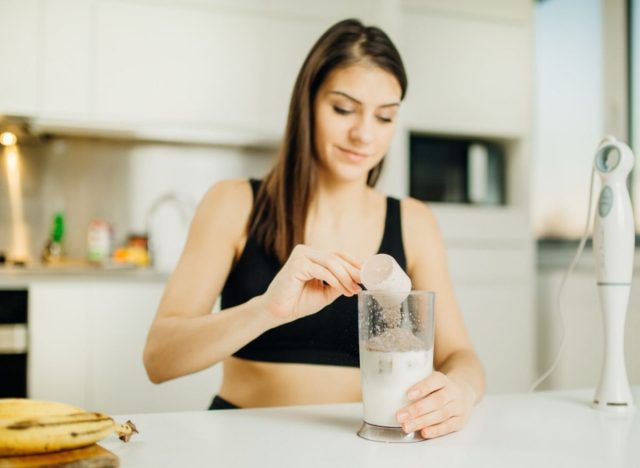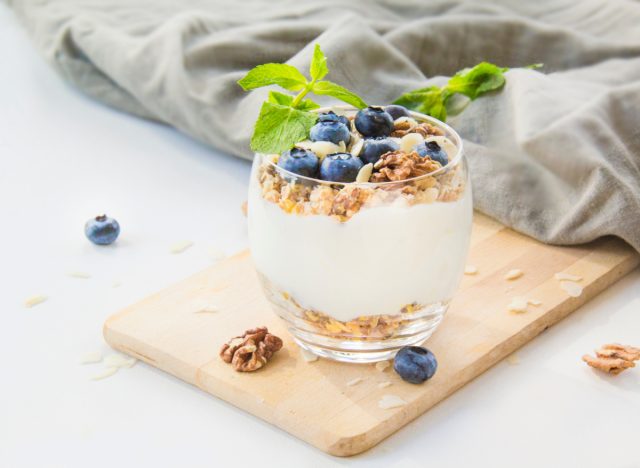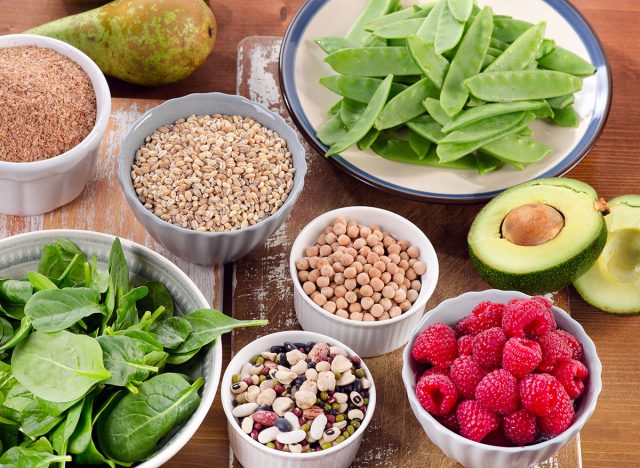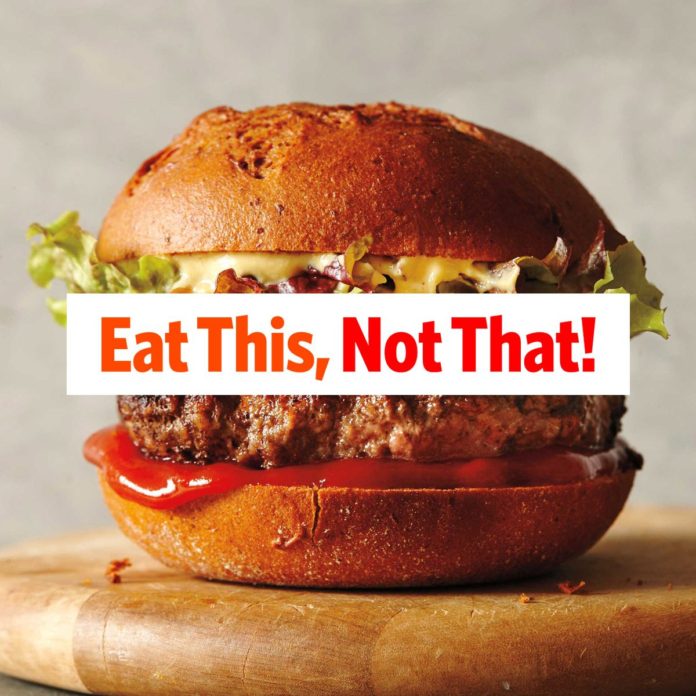With fad diets and quick-fix weight loss plans all around us, it can begin to feel discouraging to try and lose weight in a healthy, sustainable way. This is especially true as you get older because your body undergoes plenty of changes that may actually make the weight loss process a bit more difficult.
But what are some of the healthier, safer ways to lose weight in your 50s? To learn more about this, we talked with a couple of expert dietitians to get their tips on sustainable eating habits that can make a world of a difference in meeting your health goals. Continue reading to learn more, and for more healthy eating tips, don’t miss Eating Habits to Lose Abdominal Fat As You Age, Say Dietitians.
While many people are scared of eating carbs, healthy carbohydrates are actually crucial for maintaining a healthy weight, especially in your 50s.
“Whole grains are a great source of fiber and are much healthier to eat than refined or enriched grains. Refined or enriched grains are processed, which can remove many nutrients, including the fiber. Fiber is super important for anyone looking to decrease your gut size in your 50s because it helps keep you full longer, which makes it easier to reach a healthier body weight. Whole grains are also high in other important nutrients, such as B vitamins, iron, folate, magnesium, and potassium,” says Courtney D’Angelo, MS, RD and author at Go Wellness.

Along with carbohydrates, protein is another nutrient your body needs on a daily basis. And getting enough protein is vital for weight management and meeting your weight loss goals.
“Eating enough protein in your diet helps build muscles. Muscles are metabolically active, which means more muscles lead to a faster metabolism, which leads to burning fat. With enough protein, you’ll start to feel full for longer periods of time. You’ll also start to feel less excited about cravings and reaching in the pantry for sugary snacks. Overall, matching your protein intake to your weight goals will ultimately help you lose your gut, especially in our 50s,” says D’Angelo.

Treating yourself to your favorite desserts and snack foods is a good thing, but choosing a healthier alternative on occasion can help you meet your goals.
“If you can make this a habit, along with others on this list, you’ll start to notice a major difference in your gut. That’s because sweets and treats often have a lot of sugar in them. Eating sugar leads to eating more sugar, and there are plenty of negative side effects from too much sugar. Think about replacing those treats with healthier snacks, like an apple, oatmeal with protein, or greek yogurt. This way, you’re getting more protein and natural sugar in your diet,” says D’Angelo.

Resistant starch is a term that isn’t as commonly discussed, but it can play an important role in losing weight after 50.
“Incorporating foods with a good amount of resistant starch in your diet is helpful for achieving a flatter belly. As resistant starch moves through the digestive tract, it’s fermented by the beneficial bacteria living in your gut. The by-products from this fermentation process help improve the insulin response and decrease fat storage around the waist. Consuming foods high in resistant starch on a daily basis will help you see results in a short period of time and is as simple as enjoying overnight oats in the morning, snacking on cashew nuts or Prebiotic Bliss Bites during the day, or adding legumes and lentils to salads or soups for a light evening meal,” says Kara Landau, RD a registered dietitian with an expertise in gut health and founder of Uplift Food.

And lastly, getting enough fiber on a daily basis helps with many different health goals, including healthy and sustainable weight loss.
“Consuming a high-fiber diet can help with achieving a flat stomach for those in their 50s and beyond because it keeps you feeling fuller for longer so you don’t overeat, and also supports gut health to reduce bloating and keep things moving along the digestive tract,” says Landau. “Although only 50% of Americans meet the recommended daily fiber intake of 25-30 grams per day, there are some very simple strategies to incorporate more fiber into your diet so you can meet this target daily. To reach half your daily fiber target by breakfast, crush these Gut Happy Cookies over a probiotic-packed Greek yogurt or enjoy them as a digestive biscuit. If you’re more of a grazer, snacking on fruits, nuts, and seeds is an easy solution, as are these Prebiotic Puffs which are the highest fiber Puffs on the market, providing 8 grams of fiber per 120 calories.”


